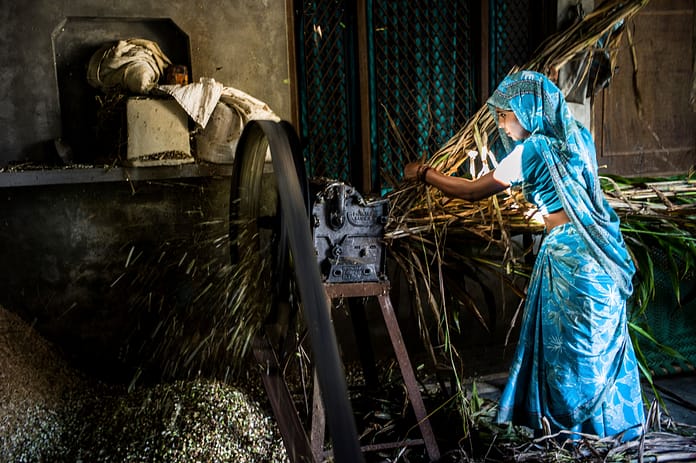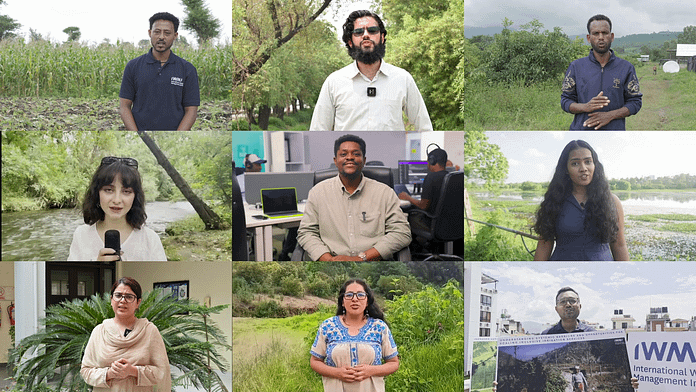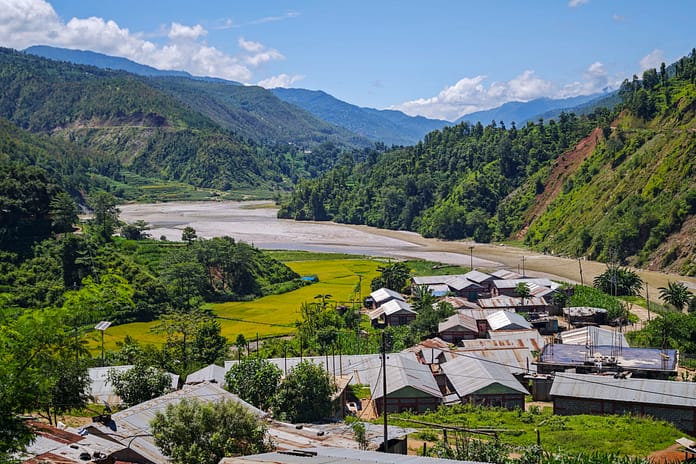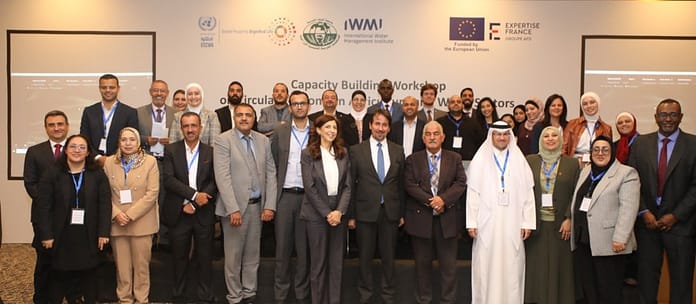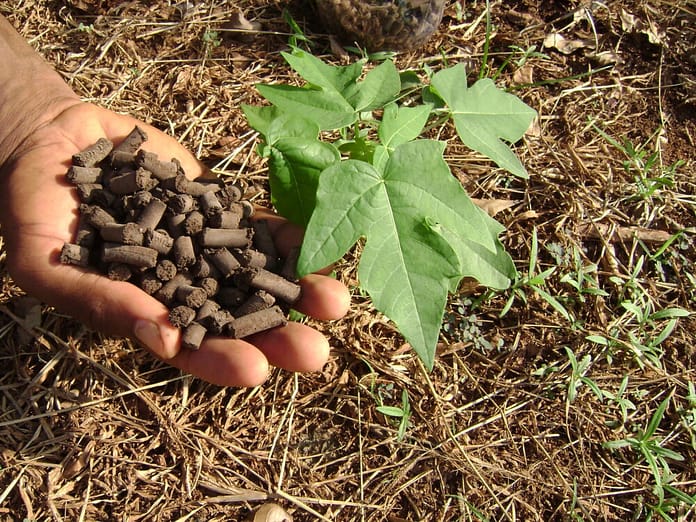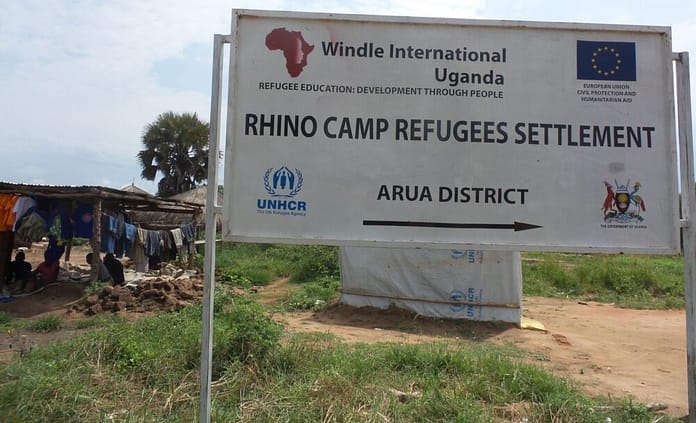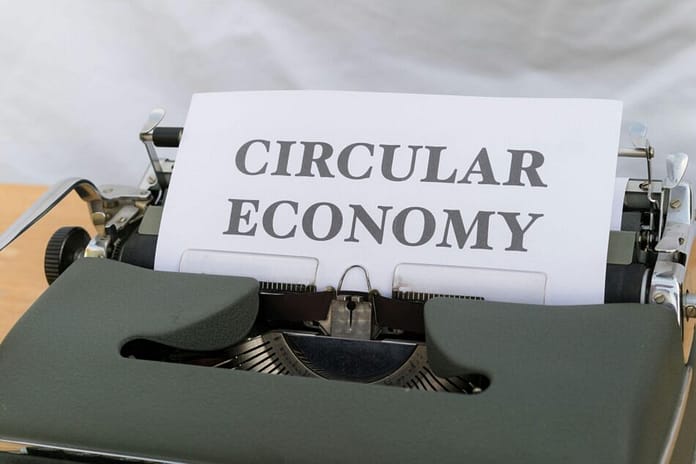The planet is facing the dual threat of climate change and resource scarcity. Under these circumstances, the traditional linear economic model, which follows a “take-make-dispose” approach, is no longer sustainable and causes the over-exploitation of food, water and material resources. Susanne Bodach, the Research Group Lead for Integrated Circular Economy Transformations at the International Water Management Institute (IWMI), and colleagues’ latest publication under the Resource Recovery & Reuse Series 25 addresses these challenges by assessing how the Circular Bioeconomy (CBE) solution can help to combat climate change and exploring climate finance opportunities.
CBE is a key part of the circular economy approach, specifically focusing on closing the loops in the biological materials cycles. By creating “loops,” processes that allow materials to be reused, repurposed and regenerated, CBE helps achieve the goal of Zero Waste. CBE business models such as bioenergy and organic fertilizer from organic waste are also beneficial for the climate as they reduce greenhouse gas (GHG) emissions and mitigate environmental impacts. However, implementing these solutions at scale requires financing mechanisms that support the transition toward a sustainable future.
Closing loops for climate and communities
The CBE model is built on pillars that help reduce carbon emissions and adapt to increasing water scarcity under global warming, such as through energy and nutrient recovery from organic waste and safe reuse of wastewater for food production.

The model has been implemented successfully in different forms around the world. For example, in Kurunegala, Sri Lanka, a municipal composting plant processes the organic fraction of municipal solid waste using windrow composting technology, a method in which compost is laid out in long rows. Compared to landfill disposal, this method reduces GHG emissions by 69%. The compost from this plant is then sold as organic fertilizer to nearby farms, which showcases how composting diverts organic waste from landfills, supports soil health and contributes to circular resource management.
In the water sector, the city of Durango, Mexico is a prime case study of successful CBE implementation. Durango faces a significant water security threat from drought and exploitation of the aquifer that supplies the city’s water. The city treats nearly 100% of its wastewater, reusing it for irrigation, urban landscaping, industrial use and mining, thereby advancing circular water management. These efforts combined with a freshwater-wastewater exchange between the city and farmers help ease the city’s water scarcity issues.
These examples from Sri Lanka and Mexico underscore that the CBE offers scalable, cross-sectoral climate solutions, benefiting waste, water, agriculture and energy sectors alike.
Climate finance to support circular bioeconomy
Implementing CBE solutions on a broad scale will require financial infrastructure, technology and capacity building. The global climate finance architecture is a dynamic system that facilitates the flow of financial resources toward climate change mitigation and adaptation efforts.
The Clean Development Mechanism, a United Nations-run carbon offset scheme that allows countries to fund GHG emission reduction projects in other countries, is an example of the intersection of climate finance and CBE. Between 2001 and 2020, nearly 2,800 projects ranging from biogas and biomass recovery to composting and wastewater treatment were registered under the mechanism globally. By 2020, these projects achieved a combined GHG emission reduction of approximately 1.5 billion tons of CO2 equivalent.
Many international climate funds are recognizing the importance of CBE projects such as energy recovery, nutrition recovery and wastewater reuse models. Specifically, water and wastewater projects have great potential to attract more adaptation finance, while sustainable waste management projects primarily receive attention from mitigation finance sources.
Scaling the circular bioeconomy model
The circular bioeconomy offers substantial climate mitigation and adaptation benefits by reducing GHG emissions across multiple sectors. It addresses approximately 15% of global anthropogenic GHG emissions by diverting biowaste from landfills, reusing wastewater, reducing crop burning, substituting chemical fertilizers and promoting bioenergy production. As such, the circular economy can be viewed as a key climate solution.
Integrating CBE strategies into Nationally Determined Contributions (NDCs) under the Paris Agreement, combined with policies like biowaste landfill bans, feed-in tariffs and financial incentives, is essential for scaling circular practices. Establishing national climate finance frameworks ensures long-term support for CBE initiatives.
In particular, water reuse at scale will be critical for climate adaptation. Currently, only 11% of global wastewater is intentionally reused, primarily in high-income countries, while unsafe irrigation practices dominate in the Global South. Freshwater-wastewater swaps provide alternative water sources for water-scarce cities.
However, in order for CBE to be implemented fully, governments and other stakeholders will need to leverage climate finance for scaling. In 2022, sectors relevant to CBE only received $72.4 billion, and greater investment is needed. Mechanisms such as international climate funds, carbon credits, green bonds and climate bonds must play a crucial role in financing biowaste and wastewater management projects.
Unlocking the potential of CBE requires capacity building across policy, business and technical sectors. Training policymakers, waste managers and entrepreneurs, along with support from research institutions and knowledge-sharing platforms, fosters technical expertise and business innovation necessary for scaling CBE solutions.
The IWMI report demonstrates how CBE can be a powerful climate solution. With the right support from climate finance, enabling policies and strong institutional capacity, governments and communities can realize its full potential. Investing in circular bioeconomy helps build more resilient economies, reduce greenhouse gas emissions and create sustainable livelihoods.



